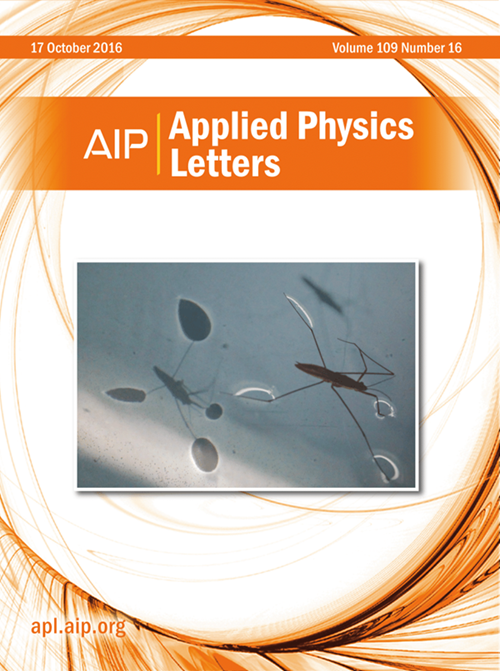毫米厚六方氮化硼晶片及快中子探测器的研制
IF 3.5
2区 物理与天体物理
Q2 PHYSICS, APPLIED
引用次数: 0
摘要
本文报道了利用卤化物气相外延(HVPE)制备准块状六方氮化硼(h-BN)制备毫米厚中子探测器的成功。对裸AmBe和Cf-252源发射的中子的探测效率分别达到0.7%和0.5%,对应的电荷收集效率约为38%。这些结果标志着我们之前的单堆叠h-BN探测器的显著改进,其厚度为90 μm,检测效率为0.1%。这种增强主要归因于h-BN层厚度的增加,从而导致更高的本征检测效率。我们还观察到,随着h-BN层通过抛光从顶部逐渐去除,载流子迁移寿命(μτ)乘积增加,这表明h-BN的电子性能随厚度的下降现在是实现高电荷收集效率的主要限制因素。这一发现强调了进一步改进HVPE生长工艺以生产具有更大厚度和改进电子性能的h-BN晶圆的必要性。然而,毫米厚单堆h-BN中子探测器的制造代表了h-BN用于快中子探测的一个重要里程碑。本文章由计算机程序翻译,如有差异,请以英文原文为准。
Development of millimeter-thick hexagonal boron nitride wafers and fast neutron detectors
We report the attainment of millimeter-thick neutron detectors fabricated from quasi-bulk hexagonal boron nitride (h-BN) produced by halide vapor phase epitaxy (HVPE). Detection efficiencies of 0.7% and 0.5% in response to neutrons emitted from bare AmBe and Cf-252 sources, respectively, have been achieved, corresponding to a charge collection efficiency of about 38%. These results mark a significant improvement over our previous single-stack h-BN detectors, which were 90 μm thick and exhibited a detection efficiency of 0.1%. This enhancement is primarily attributed to the increased thickness of the h-BN layer, leading to a higher intrinsic detection efficiency. We also observed that the carrier mobility-lifetime (μτ) product increases as layers of h-BN are successively removed from the top by polishing, indicating that a degradation in h-BN's electronic properties with thickness is now a major limiting factor for achieving high charge collection efficiency. This finding highlights the need for further refinement in HVPE growth processes to produce h-BN wafers with both larger thicknesses and improved electronic properties. Nevertheless, the fabrication of millimeter-thick single-stack h-BN neutron detectors represents a major milestone in the application of h-BN for fast neutron detection.
求助全文
通过发布文献求助,成功后即可免费获取论文全文。
去求助
来源期刊

Applied Physics Letters
物理-物理:应用
CiteScore
6.40
自引率
10.00%
发文量
1821
审稿时长
1.6 months
期刊介绍:
Applied Physics Letters (APL) features concise, up-to-date reports on significant new findings in applied physics. Emphasizing rapid dissemination of key data and new physical insights, APL offers prompt publication of new experimental and theoretical papers reporting applications of physics phenomena to all branches of science, engineering, and modern technology.
In addition to regular articles, the journal also publishes invited Fast Track, Perspectives, and in-depth Editorials which report on cutting-edge areas in applied physics.
APL Perspectives are forward-looking invited letters which highlight recent developments or discoveries. Emphasis is placed on very recent developments, potentially disruptive technologies, open questions and possible solutions. They also include a mini-roadmap detailing where the community should direct efforts in order for the phenomena to be viable for application and the challenges associated with meeting that performance threshold. Perspectives are characterized by personal viewpoints and opinions of recognized experts in the field.
Fast Track articles are invited original research articles that report results that are particularly novel and important or provide a significant advancement in an emerging field. Because of the urgency and scientific importance of the work, the peer review process is accelerated. If, during the review process, it becomes apparent that the paper does not meet the Fast Track criterion, it is returned to a normal track.
 求助内容:
求助内容: 应助结果提醒方式:
应助结果提醒方式:


